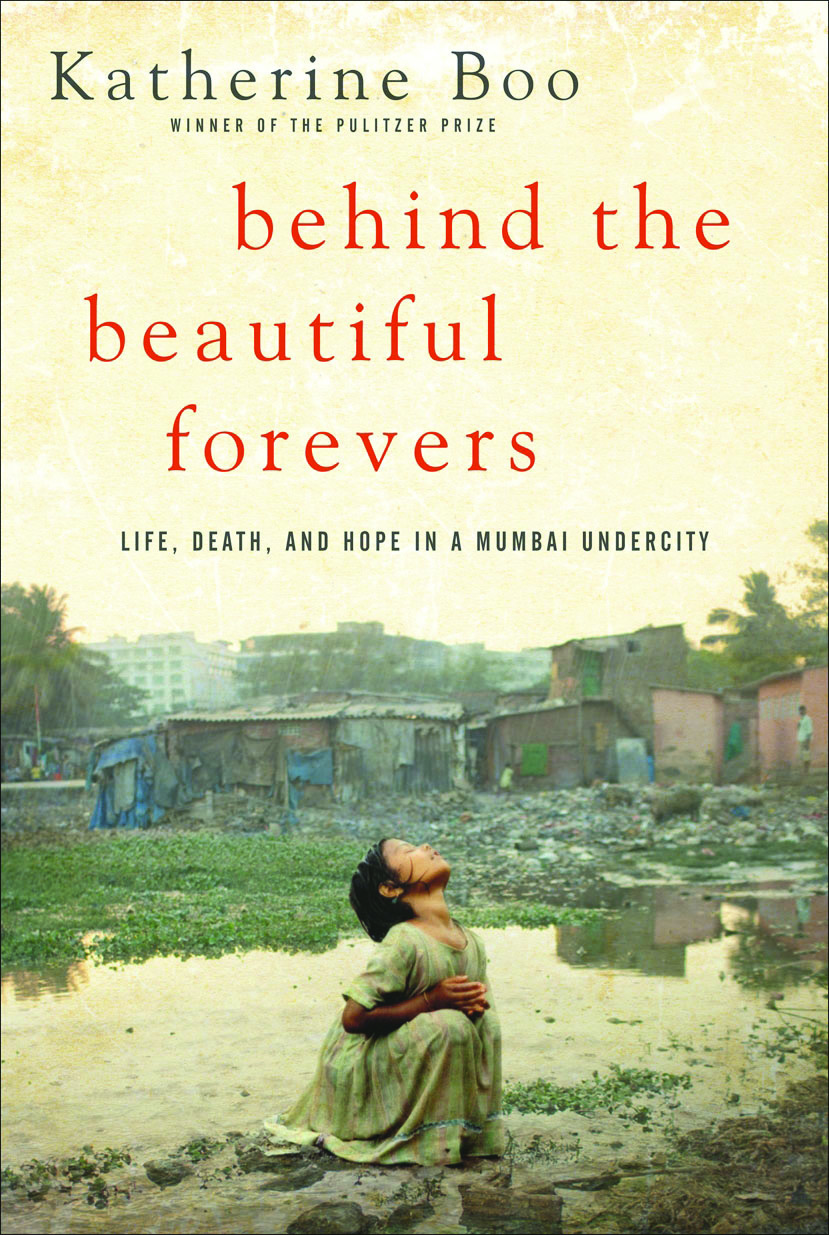A close-up view of the lives of Mumbai’s poor
Katherine Boo has made a name for herself—and won a Pulitzer Prize—writing about the lives of the poor and neglected in society. In her recent book, Behind the Beautiful Forevers, she portrays the hopes and hardships of the residents of a makeshift slum.
 The residents of Annawadi, a half-acre of more than 300 shacks hastily constructed near the Mumbai airport, struggle to make a living by scavenging, sorting, and selling the trash discarded by wealthy Indians. Abdul, the teenager at the narrative’s center, supports his family of 11, who live in a tin-roofed hut. Abdul collects empty whisky bottles, discarded tin foil, and mildewed newspapers, selling them to recyclers and hoping to make enough money to move his family to a 1,200-square-foot plot of land just outside Mumbai. He has been doing this work since he was 6 years old.
The residents of Annawadi, a half-acre of more than 300 shacks hastily constructed near the Mumbai airport, struggle to make a living by scavenging, sorting, and selling the trash discarded by wealthy Indians. Abdul, the teenager at the narrative’s center, supports his family of 11, who live in a tin-roofed hut. Abdul collects empty whisky bottles, discarded tin foil, and mildewed newspapers, selling them to recyclers and hoping to make enough money to move his family to a 1,200-square-foot plot of land just outside Mumbai. He has been doing this work since he was 6 years old.
Reviewing the book in The New York Times, Janet Maslin wrote of Boo, “She is one of those rare, deep-digging journalists who can make truth surpass fiction, a documentarian with a superb sense of human drama.” NPR said, “Her book reads like a novel, but the characters are real.”
Boo found herself drawn to the plight of these families—many of their children bypass school to work as scavengers—after meeting her husband, Sunil Khilnani, an Indian citizen and a professor of politics at King’s College London. “To me, becoming attached to a country involves pressing uncomfortable questions about justice and opportunity for its least powerful citizens,” she writes.
A blonde woman with a video recorder and notepad was a curiosity for a couple of months of Boo’s research—people trailed after her shouting “Hyatt! Intercontinental!”, thinking that she had lost her way to a luxury hotel nearby. But Annawadi’s residents soon grew used to Boo as she practiced her watch-and-listen reporting style.
Getting the story meant enduring police harassment, studying some 3,000 public records, and risking her already fragile health to spend so much time in a place where tuberculosis is rampant. But, after tripping over an unabridged dictionary in her home and breaking three ribs, Boo decided not to bow to caution and plunged into the streets to penetrate the inner lives of its least fortunate. She spent three and a half years embedded with the people of Annawadi, observing them as they made dinner, fought with their relatives, and stole scrap metal, looking for what she calls “resonant stories” that illuminate some element of the larger society.
The book’s title refers to the concrete wall that conceals Annawadi from view. It is plastered with yellow advertisements for an Italian tile company with the slogan “Beautiful Forever.” The ad fuels the dreams of Abdul’s mother, Zehrunisa: She wanted a small window to vent the cooking smoke that caused the little ones to cough like their father. She wanted ceramic floor tiles like the ones advertised on the wall—tiles that could be cleaned, instead of broken concrete that harbored filth. With these small improvements, she thought her children might stay as healthy as children in Annawadi could be.
Boo got her start at the Washington City Paper and later worked at the Washington Post before becoming a staff writer at The New Yorker, where she wrote about the poor. Some of her most riveting pieces explored the effect of welfare on mothers, the lives of survivors of Hurricane Katrina, and the plight of factory workers who faced unemployment. In 2000 she received the Pulitzer Prize for Public Service for a series about the mistreatment of the mentally impaired in group homes in the Washington area, reporting that compelled officials to launch reforms, according to the Pulitzer judges. Two years later she was awarded a MacArthur Foundation “genius” grant.
The story of India’s poor drew Boo in because, as she noted in an interview with her editor published on the author’s Web site, “in India, as in the U.S., some of the experts most ready to describe how lower-income people are faring weren’t spending much time with those people…. Economic growth had brought unprecedented opportunities for the underprivileged, officially. But I longed for a fuller sense of how those on-the-books opportunities were being experienced on the ground.”
Averting our eyes from the poor is all too easy, she pointed out. “In this age of high walls and security gates, it’s pretty easy not to see and think about those people at all,” Boo said. “Seeing what’s wrong—seeing it clearly—seems to me a crucial part of beginning to set it right.”
